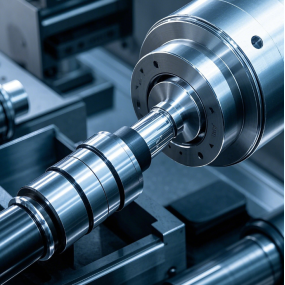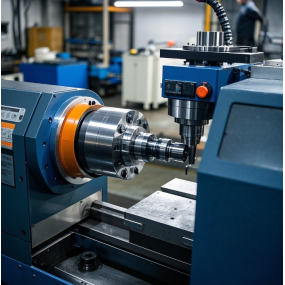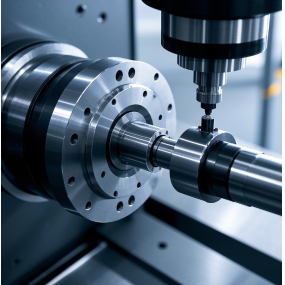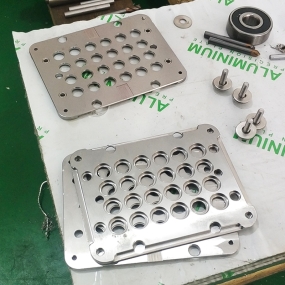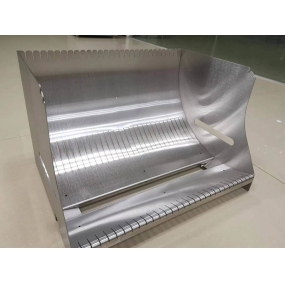Stainless steel precision parts processing has very strict requirements for appearance quality inspection to ensure the aesthetics, accuracy and durability of the product. The following are the main requirements for the appearance quality inspection of stainless steel precision parts: 1. Surface flatness and smoothness Flatness: It is required that the surface of the part is free from obvious unevenness. Usually a ruler, flat plate or high-precision measuring instrument is used for testing to ensure that the surface flatness meets the design requirements. Finish: The surface should be smooth and flawless, free of scratches, wear or pits and other defects. You can use a light source to illuminate the surface, observe its reflective condition, or carry out a detailed inspection with the help of a microscope and other tools. 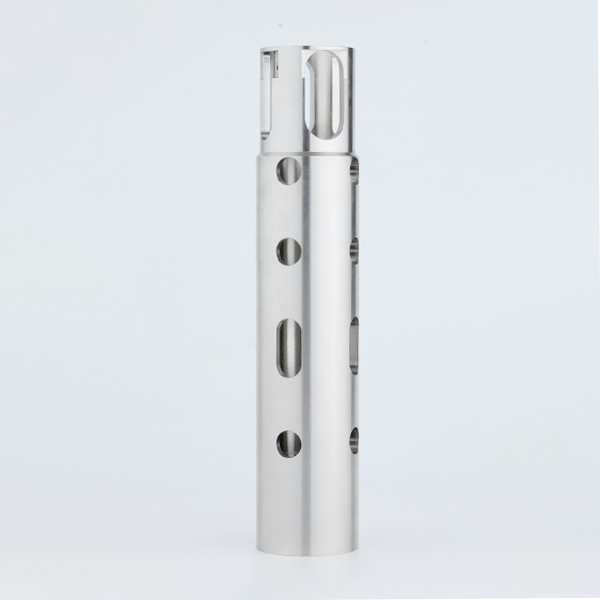 II. No damage and defects No damage: There should be no cracks, oxidation spots, corrosion marks or other forms of physical damage on the surface of the part. Detailed observation by visual inspection or with the help of auxiliary tools such as magnifying glass. No defects: such as pores, inclusions, shrinkage holes and other casting defects, as well as scratches, bumps and other processing defects shall not exist. These defects will affect the performance and appearance quality of the parts. III. Uniform color and texture: The surface color of the parts should be uniform and consistent, without obvious color difference or color spots. It can be tested by comparing the standard color card or using a color difference meter. Clear texture: For parts that need surface treatment such as wire drawing, sandblasting, etc., the texture is required to be clear, uniform and consistent, without broken lines, uneven thickness or obvious deflection. IV. Welding and Coating Quality Welding Quality: For welded parts, it is required that the welded joints are firm, have good sealing, and have no defects such as desoldering, virtual welding, solder penetration and surface slag. The appearance quality of the welded joints is also one of the focuses of the inspection. Coating Quality: For parts with surface coating, it is required that the coating has good adhesion, uniformity, no bubbles, no peeling and other phenomena. The quality of the coating directly affects the corrosion resistance and aesthetics of the parts. V. Other Requirements Cleanliness: The surface of the parts should be cleaned without oil stains, fingerprints and other contaminants. A thorough cleaning treatment should be carried out before the inspection. Identification and Packaging: Parts should be clearly marked, including information such as model, specification, production date, etc. Packaging should be intact to protect parts from damage during transportation and storage. VI. Inspection Conditions and Methods Inspection Environment: Inspection environment should be well-lit and free of interference from reflective surfaces in order to clearly observe the subtle defects on the surface of parts. Inspection Tools: Prepare corresponding inspection tools according to inspection requirements, such as rulers, flat plates, microscopes, color difference meters, etc. Inspection Methods: Comprehensive inspection is carried out by a combination of visual inspection, touch inspection, instrument measurement, and other methods.
II. No damage and defects No damage: There should be no cracks, oxidation spots, corrosion marks or other forms of physical damage on the surface of the part. Detailed observation by visual inspection or with the help of auxiliary tools such as magnifying glass. No defects: such as pores, inclusions, shrinkage holes and other casting defects, as well as scratches, bumps and other processing defects shall not exist. These defects will affect the performance and appearance quality of the parts. III. Uniform color and texture: The surface color of the parts should be uniform and consistent, without obvious color difference or color spots. It can be tested by comparing the standard color card or using a color difference meter. Clear texture: For parts that need surface treatment such as wire drawing, sandblasting, etc., the texture is required to be clear, uniform and consistent, without broken lines, uneven thickness or obvious deflection. IV. Welding and Coating Quality Welding Quality: For welded parts, it is required that the welded joints are firm, have good sealing, and have no defects such as desoldering, virtual welding, solder penetration and surface slag. The appearance quality of the welded joints is also one of the focuses of the inspection. Coating Quality: For parts with surface coating, it is required that the coating has good adhesion, uniformity, no bubbles, no peeling and other phenomena. The quality of the coating directly affects the corrosion resistance and aesthetics of the parts. V. Other Requirements Cleanliness: The surface of the parts should be cleaned without oil stains, fingerprints and other contaminants. A thorough cleaning treatment should be carried out before the inspection. Identification and Packaging: Parts should be clearly marked, including information such as model, specification, production date, etc. Packaging should be intact to protect parts from damage during transportation and storage. VI. Inspection Conditions and Methods Inspection Environment: Inspection environment should be well-lit and free of interference from reflective surfaces in order to clearly observe the subtle defects on the surface of parts. Inspection Tools: Prepare corresponding inspection tools according to inspection requirements, such as rulers, flat plates, microscopes, color difference meters, etc. Inspection Methods: Comprehensive inspection is carried out by a combination of visual inspection, touch inspection, instrument measurement, and other methods.
Hello! Welcome to EMAR's website!
 English
English » »
» »
 Spanish
Spanish Arabic
Arabic Spanish Basque
Spanish Basque Portuguese
Portuguese Belarusian
Belarusian Japanese
Japanese Russian
Russian Icelandic
Icelandic Bulgarian
Bulgarian Azerbaijani
Azerbaijani Estonian
Estonian Irish
Irish Polish
Polish Persian
Persian Boolean
Boolean Danish
Danish German
German French
French Filipino
Filipino Finnish
Finnish Korean
Korean Dutch
Dutch Galician
Galician Catalan
Catalan Czech
Czech Croatian
Croatian Latin
Latin Latvian
Latvian Romanian
Romanian Maltese
Maltese Malay
Malay Macedonian
Macedonian Norwegian
Norwegian Swedish
Swedish Serbian
Serbian Slovak
Slovak Slovenian
Slovenian Swahili
Swahili Thai
Thai Turkish
Turkish Welsh
Welsh Urdu
Urdu Ukrainian
Ukrainian Greek
Greek Hungarian
Hungarian Italian
Italian Yiddish
Yiddish Indonesian
Indonesian Vietnamese
Vietnamese 简体中文
简体中文 Haitian Creole
Haitian Creole


